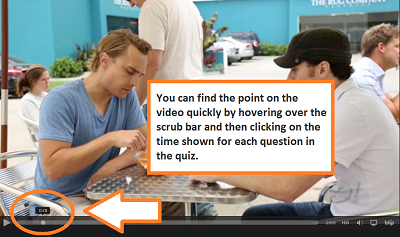Fun English Pronunciation Exercises

Before we begin this English pronunciation exercise, it's important to understand that how you say things can be as important as what you say.
Pronunciation is not just about how we say the individual sounds in words.
When we speak, the pitch (highness and lowness) and intonation (changes in pitch) of our voices also help us express a wide variety of emotions. This allows us to perform different actions when we speak such as making offers, getting attention or asking for something politely.
Stress, (emphasizing a syllable in a word) and volume, (how loud we speak) also help us to convey meaning when we speak.
Hey! 1 Word 50 Shades of Meaning
A good way to show how these characteristics express different emotions is to listen to a speaker say just one word. Let's examine the word “hey.” This is a simple, one-syllable word. It is easy to pronounce.
Read the following four examples and see if you can tell (=understand) the differences in meaning:
- Heyyyy
- Hey
- HeyYyYyY
- HEY!
It’s probably hard to understand the differences without having the word presented within a specific context or hearing the word spoken.
Yahoo created a very clever video, “50 Shades of Hey,” that shows us just how important these different pronunciation factors are. Watch the video and then take the quiz to see if you can identify the different meanings of this word.
Unfortunately, Yahoo is no longer allowing the video to be embedded in a website, but you can watch the video at this link:
Test your understanding
It's amazing how many different emotions and expressions can be conveyed with just one word, isn’t it?
Here’s a short quiz to see if you can identify some of these emotions, expressions and actions. There is a screenshot for each question so you will need to watch the video again.
I recommend you play and stop the video at the time noted in the question [in parenthesis].

Okay ready for the quiz? Write your answers on a sheet of paper.
NOTE: You will have to scroll up and down between the video above and the questions to take the quiz.

[this is at the 0:12 second mark]
1. He is expressing ______________________________________ .
a. expectation
b. surprise
c. frustration
d. hope

[This is at the 0:16 second mark]
2. Which word best describes the speaker’s emotion?
a. hatred
b. annoyance
c. grief
d. rudeness

[this is at the 0:18 mark]
3. Which of the following doesn’t the speaker express?
a. irritation
b. annoyance
c. fury
d. displeasure

[This is at the 0:21 second mark]
4. Which prefix can you add to describe his emotion?
___pleasure
a. dis
b. un
c. in
d. mis

[This is at the 0:36 second mark]
5. He speaks in a way that conveys:
a. excitement
b. happiness
c. satisfaction
d. coolness

[This is at the 0:58 second mark]
6. Does the pitch (highness or lowness) of his voice change or stay the same?
a. changes
b. stays the same

[This is at the 1:02 second mark]
7. The speaker expresses all of these emotions (check all that apply)
a. excitement
b. disapproval
c. enthusiasm
d. disinterest
e. reserve
f. serenity

[This is at the 1:16 second mark]
8. Sometimes we lower the pitch to the very lowest part of the normal speaking range and pronounce the words in a softer voice as in this example to express feelings such as
______________________.
a. happiness
b. sympathy
c. excitement

[This is at the 1:21 second mark]
9. To signal a question, a speaker normally uses a ____________________ pitch, as seen in the first “hey” in this example.
a. rising (low to high)
b. falling (high to low)

[This is at the 1:28 second mark]
10. The abrupt change in intonation from ________________ signals annoyance here.
a. low to high (rising)
b. high to low (falling)

[This is at the 1:33 second mark]
11. As seen here, falling intonation sounds more__________________ than rising intonation. (select all answers that are correct).
a. final
b. polite
c. complete
d. unsure

[This is at the 1:40 second mark]
12. Intonation does not just rise and fall. There are different degrees of pitch, so the range of intonation can also change. In this example, there is a __________ fall in intonation. The syllable on which this is pronounced is also louder and pronounced with greater stress. The result is a lively greeting or exclamation.
a. low
b. medium
c. high
Quiz answers
1. a
He is expressing surprise: he didn’t expect to find money in his pocket.
2. b
He is expressing annoyance. He is annoyed the person walked in front of him when he was patiently waiting.
3. c
He doesn’t express fury. Each of these nouns express varying degrees of displeasure. However, fury is too strong to describe his feelings in this situation.
4. a
He expresses displeasure (a feeling of being annoyed or dissatisfied with his puppy for chewing his shoe.)
5. d
He expresses coolness. He’s speaking in a calm and self-assured way. He is composed but not too excited.)
6. a
7. a, c
8. b
Sometimes we lower the pitch to the very lowest part of the normal speaking range and pronounce the words in a softer voice as in this example to express feelings such as sympathy.
9. a
To signal a question, a speaker normally uses a rising (low to high) pitch, as seen in the first “hey” in this example.
10. b
11. a, c
12. c
In this example, there is a high fall in intonation. The syllable on which this is pronounced is also louder and pronounced with greater stress. The result is a lively greeting or exclamation.)
Further practice on English emotions
How did you do? I’ve created a vocabulary page on emotions if you need more practice.
Review the emotions in English
- Home Page ›
- English Speaking ›
- English pronunciation exercise
